Unlearning the Myths of Asian Art History
Culling ancient works from the Asia Society’s collection, Rina Banerjee, Howardena Pindell, and Byron Kim look to the past to challenge ideas of identity and authenticity.
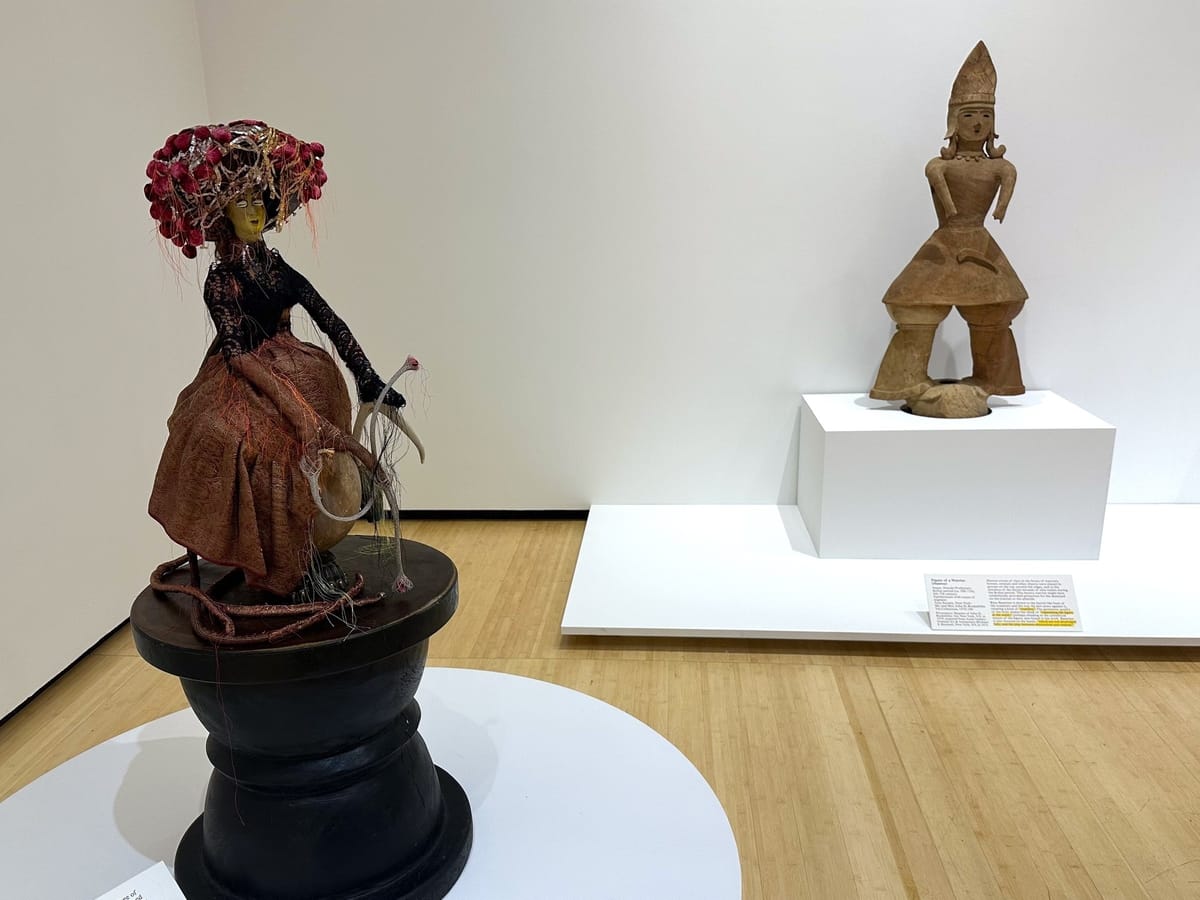
I have never taken an art history course, unless you count two COVID-impacted Zoom classes. Particularly given the weight of everything I don't know, engaging with ancient art can be a fraught task. It’s rife with traps and tricks of the eye, and the gaps left in its wake are ripe for misinterpretation and, perhaps in greater measure, imagination and new kinds of truth.
It’s those possibilities of the unknown, which can paradoxically yield what feel like the most faithful tellings of history, that pulled me to Manhattan’s Asia Society and Museum for (Re)Generations: Rina Banerjee, Byron Kim, and Howardena Pindell amid the Mr. and Mrs. John D. Rockefeller 3rd Collection. Three luminary artists hand-picked pieces from the museum collection to show alongside their own work, and I wanted to know how they did it. How do you claim your place in an artistic lineage without distorting or romanticizing it? Is that even possible?
Across two galleries, (Re)Generations echoes the de Young museum’s African Art program and other series inviting artists to show work responding to collection items. All of these initiatives are necessarily limited by their own framework; if this show's unwieldy title is any indication, the collection itself is generally not to be questioned. Still, as neon-yellow highlighted phrases on multiple object labels reminded me, (Re)Generations aims to push us to reconsider the scope of Asian art history itself, albeit to varying degrees of success. One label noted that Banerjee “wanted to include smaller figures to visually connect to her smaller sculptures,” quoting her recollection that “what my parents brought had an aura of preciousness,” a tender feeling that most of us in immigrant families recognize. Kim, meanwhile, painted “Maebyeong (Asia Society)” (2024) in response to the “unnameable color” of Goryeo green glaze adorning ceramic pieces in the museum collection. In the upstairs gallery, visionary American artist Pindell’s work reflects her time living in Japan and India, with collages hanging across from ancient South Asian miniature paintings and a pair of Edo-era screens bisecting the room. Selfishly, her 1984 collage “Autobiography: India (Lakshmi)” caught my eye, transforming my namesake — whose mainstream iconography drips with thinly veiled colorism and casteism — into a prism through which to refract the myth of a single, fixed South Asian art history.
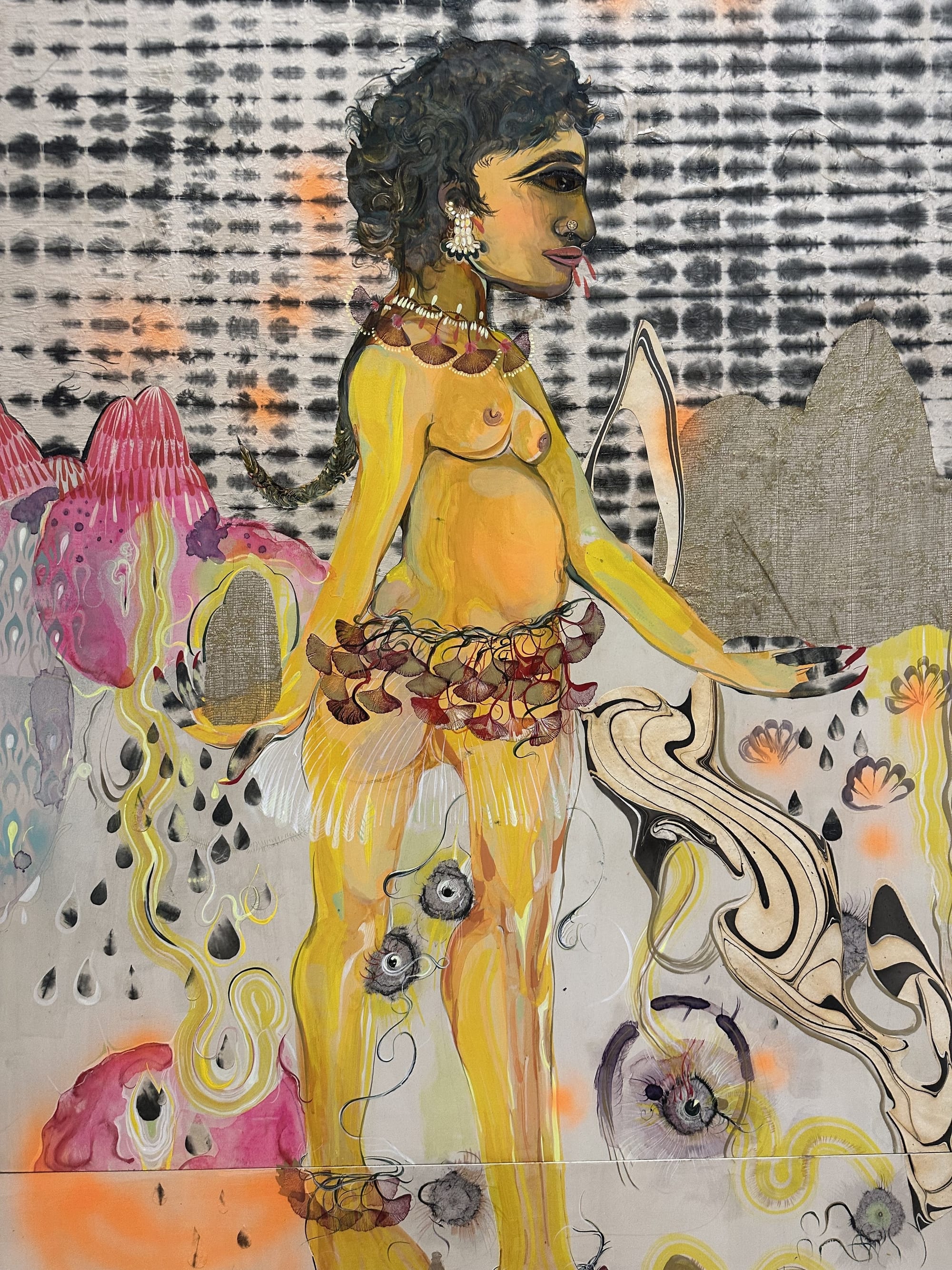
And if editing and embellishing objects from the past is a kind of poetry, Banerjee is the laureate. With sculptures and paintings that make tricks of the eye seem like child’s play, she brings her material sensitivity to two works created specifically for this show: The towering quasi-monument near the show’s entrance was fashioned from materials culled from the Philippines, Scotland, India, and elsewhere, while a smaller but no less exquisite figure sprouting from a repurposed megaphone wears rows of dangling, painted gourds. Some of the ancient vessels, sculptures, and figurines on display felt like a shoehorned afterthought, particularly those that made it difficult to closely observe them and Kim's works at the same time. But even the contemporary works I wasn’t particularly drawn to, like Kim’s ongoing Synecdoche begun in 1991, felt like a necessary part of the puzzle, leaving the idea of Asian art history itself unfinished and indeterminate.
But not all of these lineages are tidy family trees delineated on those persistent wall labels, which makes them all the more compelling. Kim’s groundbreaking Belly Painting series from the 1990s links the collection’s Goryeo-era bottle that inspired him to the shape of Banerjee’s hooped sculptures. Banerjee’s sequined sculpture calls out to Pindell’s hole-punch and glitter works upstairs. I left feeling affirmed in a piece of wisdom that can too easily slip into banality: that the most supposedly “authentic” identity is one that is inseparable from other traditions, places, and visual languages. As with the threads of Banerjee's sculptures and Pindell's archipelagic references to Japanese geography, unfinished edges are the point, and fraying is an invitation to continue braiding, weaving, and creating.
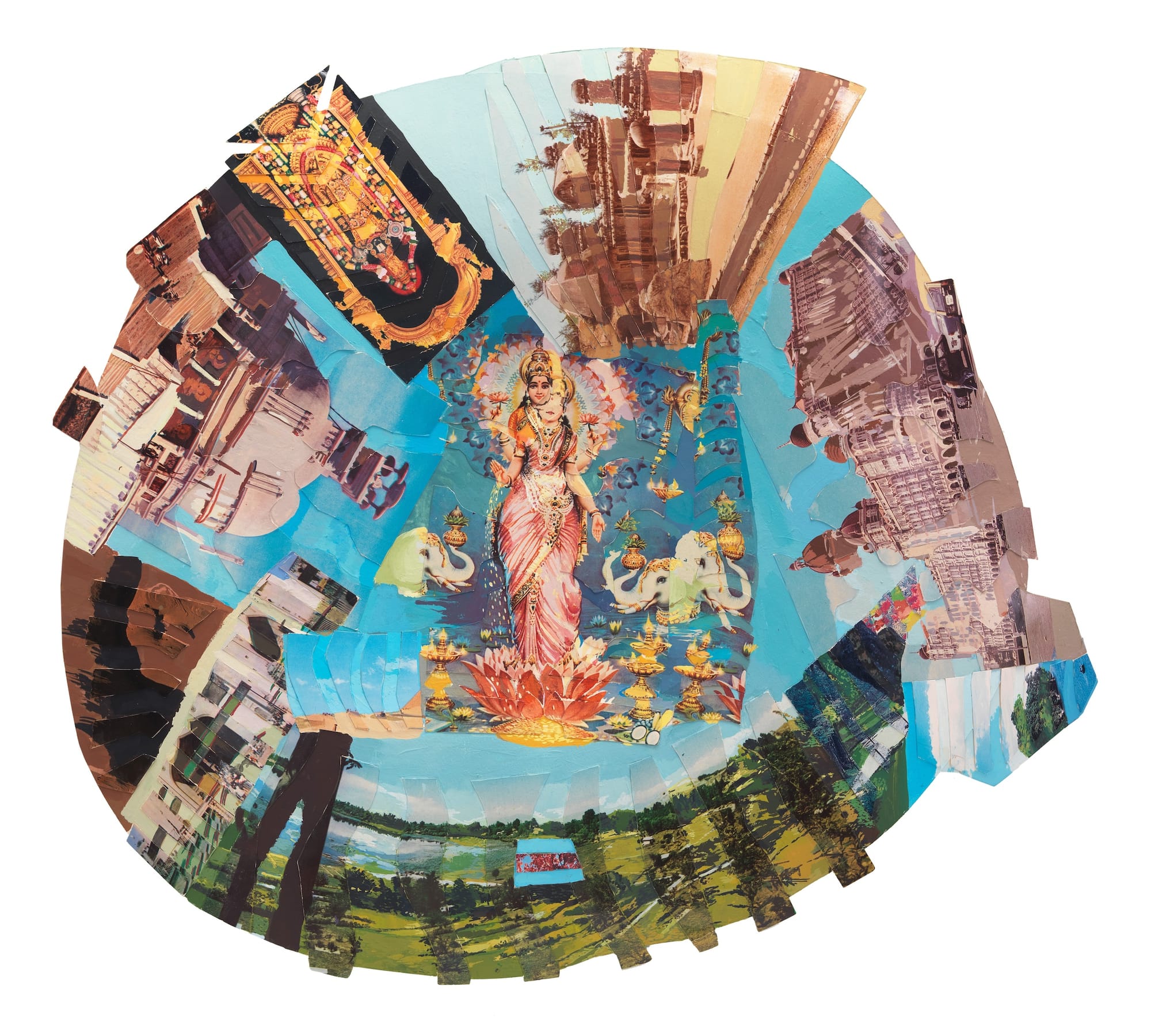
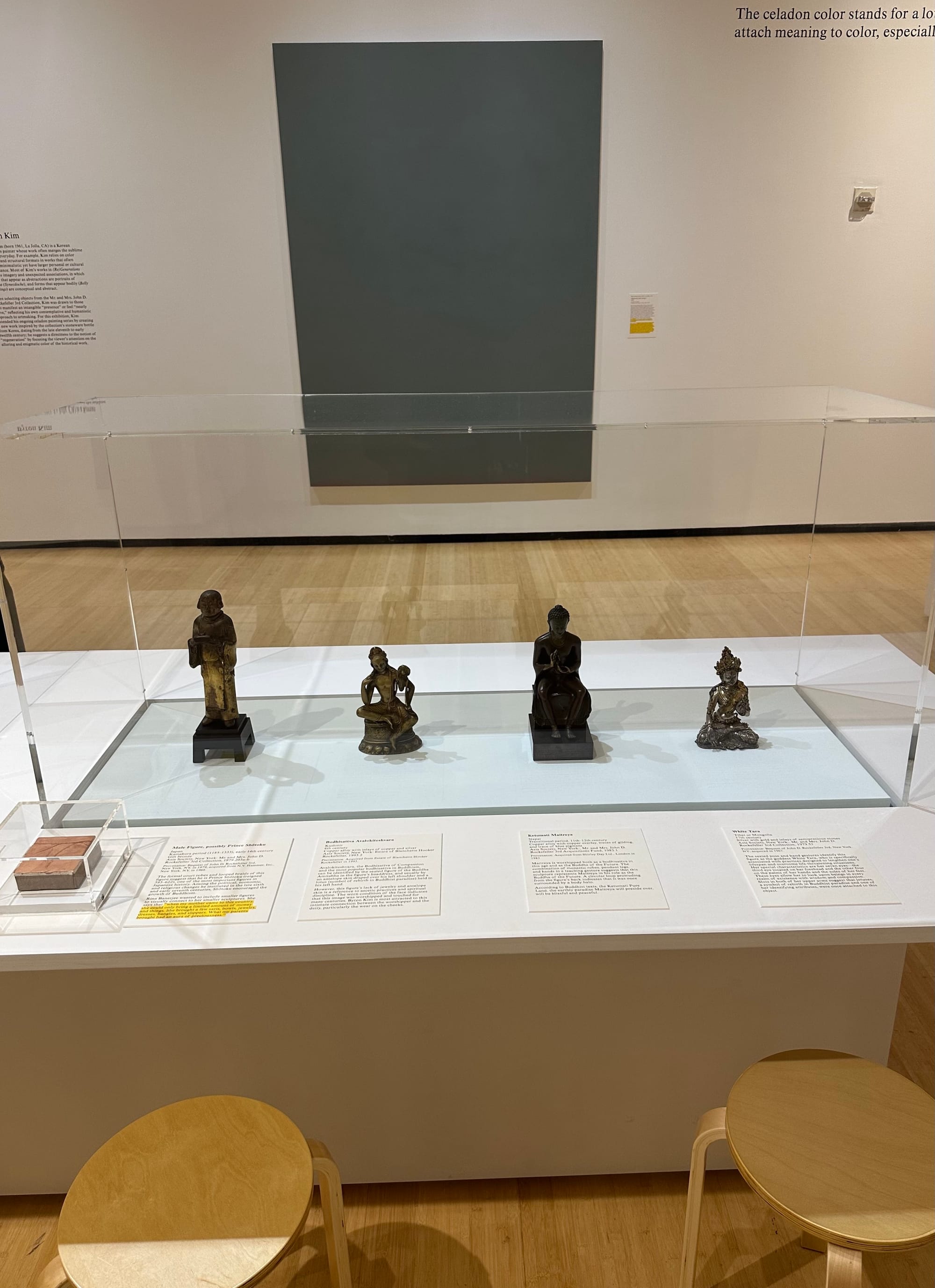
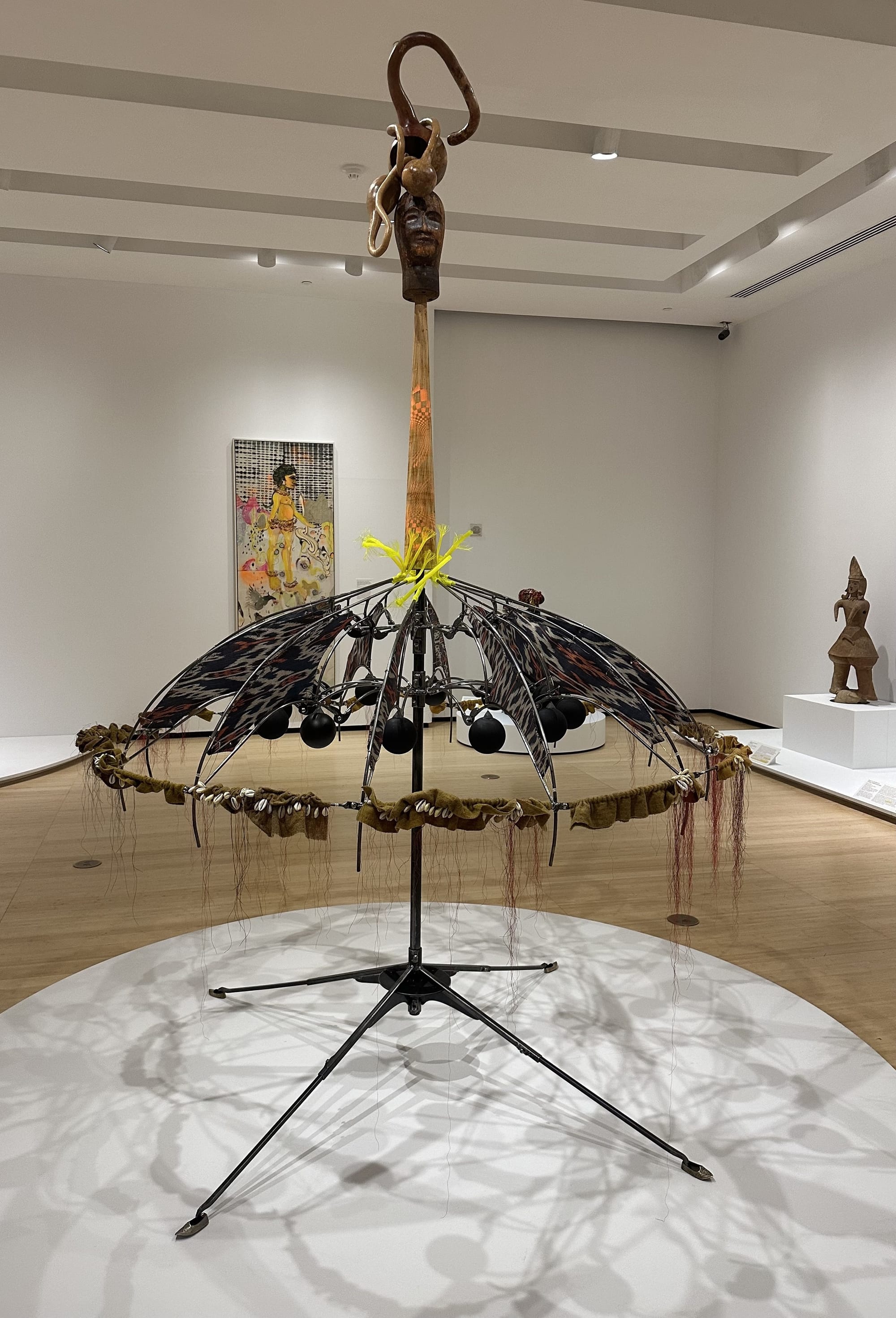

(Re)Generations: Rina Banerjee, Byron Kim, and Howardena Pindell amid the Mr. and Mrs. John D. Rockefeller 3rd Collection continues at the Asia Society and Museum (725 Park Avenue, Upper East Side, Manhattan) through January 4, 2026. The exhibition was organized by the museum.





